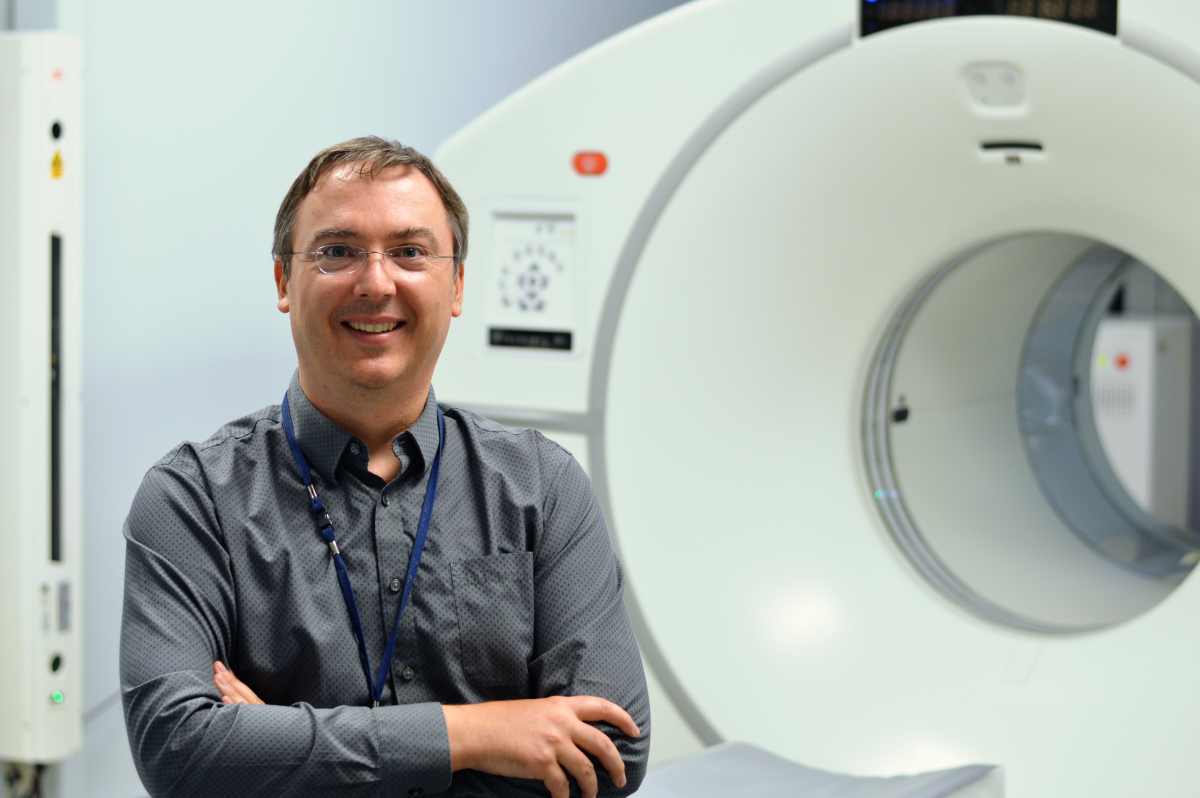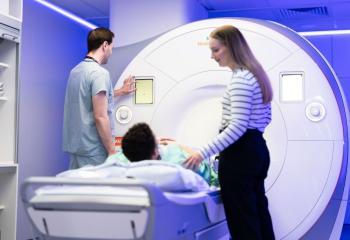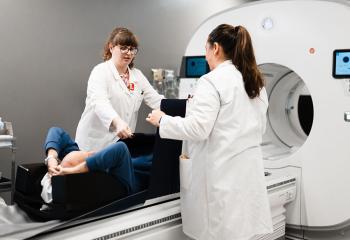
Dr. James Clarke, QEII radiologist and chief of diagnostic imaging for Nova Scotia Health’s Central Zone, shares why a Mobile MRI is an innovative approach to creating more access for patients across Nova Scotia.
As the province’s largest and most specialized hospital, the QEII cares for patients across the province, and beyond. That’s why, together with generous donors, the QEII Foundation is creating a solution that will create more MRI access for patients throughout Nova Scotia – bringing care closer to home.
With donor support, a new mobile MRI will be available in 2025, traveling throughout the province to communities with the greatest need or where access gaps are identified. As the demand for MRIs in the province continues to grow, a new mobile MRI unit is an innovative approach to help patients get their critical scans sooner.
In this Q&A, Dr. James Clarke, QEII radiologist and chief of diagnostic imaging for Nova Scotia Health’s Central Zone, shares more about the mobile MRI and how donor support will directly impact patients.
What is a mobile MRI and how will it increase access to care?
Having an MRI outside the traditional hospital walls is a creative solution to adding more MRI capacity without the restrictions of finding available, suitable space inside the walls of existing buildings.
The mobile MRI is a self-contained diagnostic suite inside a bright and modern trailer, equipped with the most advanced technology. Designed with patient comfort and experience top of mind, the mobile MRI will take a true travel approach to bringing MRI services to communities across Nova Scotia. Once the mobile MRI arrives in a community, patient scanning can begin within days.
How will the mobile MRI impact patients?
Many patients can’t have their medical condition diagnosed and treated until they have MRI imaging. By funding a mobile MRI, we can increase the number of MRI appointments for more Nova Scotians. Adding a new mobile MRI unit will allow for approximately 4,000 more patient scans annually. Each person who comes off the waitlist creates an opening for someone else.
The mobile MRI will enable us to provide care closer to home for some patients, creating more equitable care in rural communities, while opening more appointments across the province.
Why are MRIs in such high demand?
MRIs are some of the best tests for detecting certain diseases and health conditions and are most commonly used in neurology, oncology and musculoskeletal imaging. The images produced by MRIs are often the first step in helping a doctor understand an issue, which is why they are in such high demand.
➡️Watch now: Dr. Clarke answers your questions about why a mobile MRI will help more patients and how your support will make it possible.
If you want to be part of bringing a mobile MRI to Nova Scotia in 2025, visit QE2Foundation.ca/MobileMRI to learn more or make a gift.


